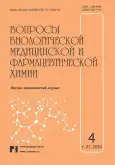Discrete optimization of the implementation stages of pharmaceutical development for a spray treatment for oral diseases
- Authors: Shatalov D.O.1, Kedik S.A.1, Akhmedova D.A.1, Gromakova A.I.2, Koroleva Y.A.1, Dolgovskaya A.Y.1,3, Kharchenko S.M.1, Kirillova D.D.1, Minenkov D.S.4, Nikulin A.V.1
-
Affiliations:
- MIREA – Russian Technological University
- All-Russian Scientific Research Institute of Medicinal and Aromatic Plants
- Institute of Pharmaceutical Technologies
- Ishlinsky Institute for Problems in Mechanics of the Russian Academy of Sciences
- Issue: Vol 27, No 4 (2024)
- Pages: 20-28
- Section: Pharmaceutical chemistry
- URL: https://journals.eco-vector.com/1560-9596/article/view/631161
- DOI: https://doi.org/10.29296/25877313-2024-04-03
- ID: 631161
Cite item
Abstract
Introduction. All over the world more than 3.5 billion people suffer from oral diseases, which can lead to endogenous infectious diseases and create conditions for external infections. The growing antimicrobial resistance of bacterial strains is a global health threat. Oligoalkyleneguanidine polymers may be promising compounds to solve this problem. The spray form for the application of these substances is the most optimal.
The aim of the study is to apply discrete optimization to implement the stages of pharmaceutical development of a spray based on branched oligohexamethyleneguanidine for the treatment of oral diseases.
Material and methods. Experiments are carried out using various equipment and samples with different compositions have been developed. The implementation of the pharmaceutical development stages was carried out using a discrete optimization algorithm.
Results. When implementing discrete optimization in pharmaceutical development, it is necessary to prioritize criteria and limitations using the target quality profile of the drug being developed. As a result of the optimization cycles carried out, the optimal composition was selected, which corresponds to the target quality profile, including such parameters as pH, dynamic viscosity, sterilizing filtration, adhesion of the formulations to the oral mucosa and the spray torch. A discrete optimization was carried out, taking into account the wetting edge angle and particle size distribution. The optimal composition was sample No. 8, which has pseudoplastic properties, provides unhindered spraying and prevents the composition from draining from the mucous membrane of the oral cavity.
Conclusion. During the study, the optimal ratio of components was determined and the development of a spray based on oligohexamethyleneguanidine with the implementation of stages of pharmaceutical development for discrete optimization was proposed.
Full Text
About the authors
D. O. Shatalov
MIREA – Russian Technological University
Author for correspondence.
Email: shatalov_d@mirea.ru
ORCID iD: 0000-0003-4510-1721
Ph.D. (Pharm.)
Russian Federation, MoscowS. A. Kedik
MIREA – Russian Technological University
Email: shatalov_d@mirea.ru
ORCID iD: 0000-0003-2610-8493
Dr.Sc. (Tech.), Professor
Russian Federation, MoscowD. A. Akhmedova
MIREA – Russian Technological University
Email: shatalov_d@mirea.ru
ORCID iD: 0000-0002-0951-939X
Assistant
Russian Federation, MoscowA. I. Gromakova
All-Russian Scientific Research Institute of Medicinal and Aromatic Plants
Email: shatalov_d@mirea.ru
ORCID iD: 0000-0001-8984-0724
Dr.Sc. (Pharm), Chief Research Scientist
Russian Federation, MoscowYu. A. Koroleva
MIREA – Russian Technological University
Email: shatalov_d@mirea.ru
ORCID iD: 0000-0001-8092-1990
Student
Russian Federation, MoscowA. Yu. Dolgovskaya
MIREA – Russian Technological University; Institute of Pharmaceutical Technologies
Email: shatalov_d@mirea.ru
Student
Russian Federation, Moscow; MoscowS. M. Kharchenko
MIREA – Russian Technological University
Email: shatalov_d@mirea.ru
Student
Russian Federation, MoscowD. D. Kirillova
MIREA – Russian Technological University
Email: shatalov_d@mirea.ru
ORCID iD: 0000-0002-3055-1116
Student
Russian Federation, MoscowD. S. Minenkov
Ishlinsky Institute for Problems in Mechanics of the Russian Academy of Sciences
Email: shatalov_d@mirea.ru
ORCID iD: 0000-0001-6432-8134
Senior Research Scientist
Russian Federation, MoscowA. V. Nikulin
MIREA – Russian Technological University
Email: shatalov_d@mirea.ru
ORCID iD: 0009-0004-2755-2734
Associate Professor
Russian Federation, MoscowReferences
- Global oral health status report: towards universal health coverage for oral health by 2030. Geneva: World Health Organization; 2022. Licence: CC BY-NC-SA 3.0 IGO.
- WHO: Antimicrobal resistance [Jelektronnyj resurs] URL: https://www.who.int/en/news-room/fact-sheets/detail/antimicrobial-resistance (data obrashhenija 22.11.2023).
- Rasporjazhenie Pravitel'stva RF ot 25 sentjabrja 2017 g. № 2045-r O Strategii preduprezhdenija rasprostranenija antimikrobnoj rezistentnosti v RF na period do 2030 g.
- Shatalov D.O., Kedik S.A., Zhavoronok E.S. i dr. Opyt i perspektivy razvitija ispol'zovanija sinteticheskih antimikrobnyh veshhestv. Vse materialy. Jenciklopedicheskij spravochnik, 2016; 8: 14.
- Gubin M.M. Tehnologija lekarstv po GMP: sprei i ajerozoli. Tver', 2012. 176 s.
- Kornjushko V.F., Nikolaeva O.M., Panov A.V. i dr. Upravlenie kachestvom himiko-tehnologicheskogo processa nepreryvnogo sinteza aktivnoj farmacevticheskoj substancii lekarstvennyh soedinenij v protochnyh mikroreaktorah. Tonkie himicheskie tehnologii. 2021; 16(3): 252–266.
- Shatalov D.O., Kedik S.A., Ajdakova A.V. i dr. Sovremennye podhody k razrabotke gotovyh lekarstvennyh form dlja lechenija zabolevanij polosti rta (obzor). Biofarmacevticheskij zhurnal. 2019; 11; 4; 15–28.
- Shatalov D.O, Kedik S.A., Krupenchenkova N.V., et al. Acute Toxicity of the Pharmaceutical Substance Branched Oligohexamethyleneguanidine Hydrochloride at Mice and Rats after Intragastric Administration. American Journal of Biomedical Science & Research. 2019; 4(2): 76–77.
- Pokrovskij V.M., Korot'ko G.F. Fiziologija cheloveka. V 2-h tomah. Tom 1 M.: Medicina. 1997. 448 s.
- Kinlok Je. Adgezija i adgezivy: Nauka i tehnologija. Pod red. L. M. Pritykina. M.: Mir, 1991. 484 s.
- Krahmalev I.S. Razrabotka sostava, tehnologii i norm kachestva spreja protivovospalitel'nogo dejstvija: avtoref. diss. ... kand. farm. nauk: 14.04.01. Volgograd, 2013. 115 с.
Supplementary files












